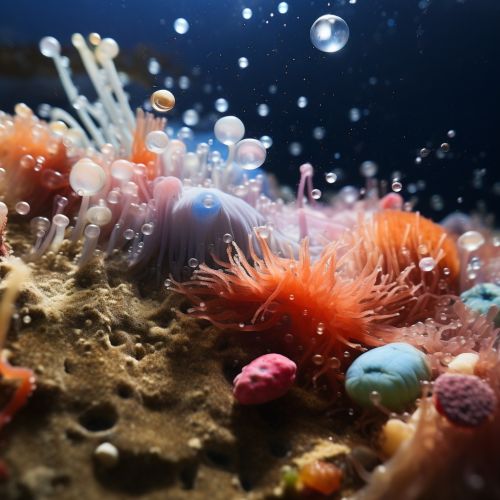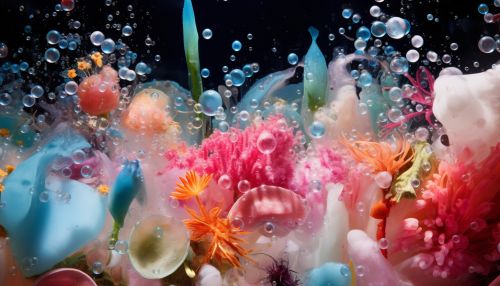Mechanisms of Microplastic Degradation by Marine Microbes
Introduction
Microplastics are tiny fragments of plastic, typically less than 5mm in size, which have become a major environmental concern due to their persistence in the environment and potential to harm marine life. One of the key challenges in mitigating the impact of microplastics is understanding how they degrade in the marine environment. This article will explore the mechanisms of microplastic degradation by marine microbes, a process that is crucial to the eventual removal of these pollutants from the ocean.


Microplastics in the Marine Environment
Microplastics originate from a variety of sources, including the breakdown of larger plastic items, industrial processes, and the washing of synthetic textiles. Once in the marine environment, they are subject to a range of physical, chemical, and biological processes that can alter their properties and fate. The interaction of microplastics with marine microbes, collectively known as the microbial loop, is a key aspect of this process.
Microbial Degradation of Microplastics
Marine microbes, including bacteria, algae, and fungi, can colonize the surface of microplastics in a process known as biofilm formation. This microbial community can contribute to the degradation of microplastics through a variety of mechanisms.
Biofilm Formation
Biofilm formation on microplastics begins with the attachment of pioneer microbes to the plastic surface. These microbes secrete extracellular polymeric substances (EPS), creating a matrix that facilitates the attachment of other microbes and the development of a complex microbial community. The biofilm can alter the physical and chemical properties of the microplastic, influencing its buoyancy, aggregation, and degradation.
Biodegradation
Biodegradation refers to the microbial breakdown of materials, driven by the metabolic activities of the microbes. Some marine microbes can utilize microplastics as a carbon source, breaking down the plastic polymers into smaller, less harmful compounds. This process is influenced by a range of factors, including the type of plastic, the microbial community, and environmental conditions.
Bioerosion
Bioerosion is another mechanism by which microbes can contribute to microplastic degradation. This involves the physical breakdown of the plastic surface by microbial activities, such as the production of EPS and the movement of microbes. Bioerosion can increase the surface area of the microplastic, enhancing its susceptibility to further degradation.
Factors Influencing Microbial Degradation of Microplastics
The microbial degradation of microplastics is influenced by a range of factors, including the properties of the microplastic, the microbial community, and environmental conditions.
Microplastic Properties
The properties of the microplastic, such as its size, shape, and polymer type, can influence its interaction with microbes and its susceptibility to degradation. For example, smaller microplastics have a larger surface area to volume ratio, potentially facilitating greater microbial colonization and degradation.
Microbial Community
The composition of the microbial community on the microplastic can also influence its degradation. Different microbes have different metabolic capabilities, and the presence of plastic-degrading microbes is crucial for biodegradation to occur.
Environmental Conditions
Environmental conditions, such as temperature, pH, and nutrient availability, can influence the microbial degradation of microplastics. These factors can affect microbial activity and the physical properties of the plastic, influencing its degradation.
Implications and Future Directions
Understanding the mechanisms of microplastic degradation by marine microbes is crucial for predicting the fate of microplastics in the marine environment and developing strategies for their mitigation. Future research should aim to further elucidate these mechanisms and explore potential ways to enhance microbial degradation of microplastics.
